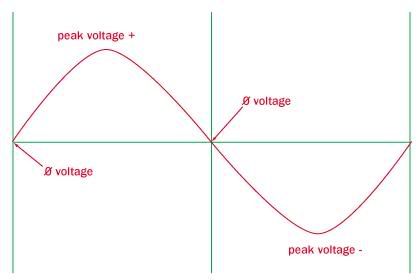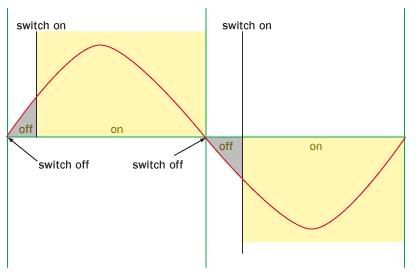bullheimer
Senior Member
- Location
- WA
you dim the light and a pot drops part of the load of the bulb. less voltage in the lamp, less wattage. the circuit is still 120v so it's still dropping 120V. if the R of lamp is 10 ohm, 120V = 12A so lets say it's 100 ohms for 1.2A. add a 100 ohm pot in the switch, now its 120V/200ohms=.6A half of the 1.2, duh. if P for the ckt is E x I 120V x 1.2A = 144W; 120V x .6A with dimmer = 72W, half the wattage. so savings of half to have the lamp on dim.
P for each load adds up to Ptotal. for dimmer switch you have 60V x .6A = 36 W and lamp is same,since i said R was the same, so 72W total for ckt with dimmer and lamp. gee just did that...
i don't know, i guess thats as it should be, but it seems to me that even with a dim light, those dimmers have big heat sinks, and can get hot, so they are using alot of the energy that i should be saving by having the light dim instead of bright.
i am no engineer, i don't really need all this math crap beyond ohms law, can somebody tell me if i would really be saving half the power if i have my light on half as bright? should i actually even care? regardless, i appreciate your time. seems like i am missing something but maybe i'm not. probably should be trying to think about something else.
P for each load adds up to Ptotal. for dimmer switch you have 60V x .6A = 36 W and lamp is same,since i said R was the same, so 72W total for ckt with dimmer and lamp. gee just did that...
i don't know, i guess thats as it should be, but it seems to me that even with a dim light, those dimmers have big heat sinks, and can get hot, so they are using alot of the energy that i should be saving by having the light dim instead of bright.
i am no engineer, i don't really need all this math crap beyond ohms law, can somebody tell me if i would really be saving half the power if i have my light on half as bright? should i actually even care? regardless, i appreciate your time. seems like i am missing something but maybe i'm not. probably should be trying to think about something else.


